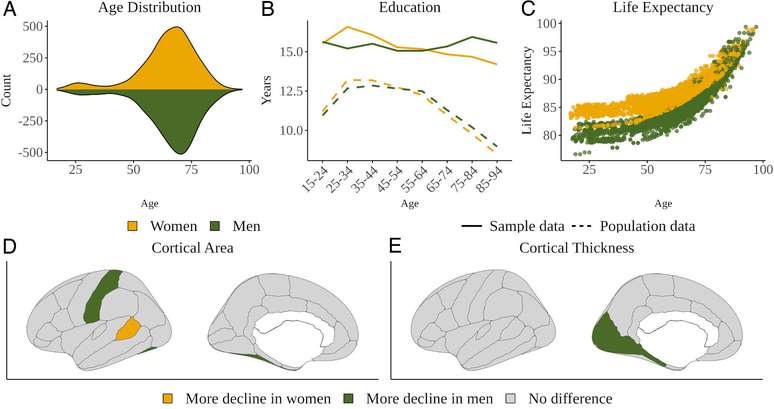The obesity rate today is around 22%; the lack of time for exercise and the consumption of ultra-processed foods worsen the situation, especially among the poorest
The lack of time to exercise and the excess of ultra-processed foods are already reflected in the balance sheets of Brazilians now, but the situation will worsen rapidly in the coming years. Three out of ten Brazilian adults will be obese by 2030, according to a study by the Federal University of Minas Gerais (UFMG). In the most recent data collected by the Ministry of Health, in 2020, the share of obese people was close to 22%.
From job estimates, published in the journal Scientific reports 68% of Brazilians will be overweight by 2030. Among the obese, the forecast is that 9% will be at levels 2 and 3, the highest levels, when the risks of diseases such as hypertension, diabetes and some cancers increase. remarkably.
This year’s World Obesity Atlas report, which also makes projections, places Brazil as the 4th most obese country in the world in 2030 by absolute number, behind only the United States, China and India. For the study’s author, Rafael Claro, Brazil has been lagging behind in obesity compared to richer nations, such as the United States, but with greater speed and intensity.
to know more
“It is also possible to observe that countries that have long faced obesity are implementing more aggressive policies to combat the disease, which unfortunately is not yet seen in Brazil,” says he, a professor of Nutrition at the UFMG School of Nursing. Consequently, the trend is that this increase in the number of obese people will burden the public and private system more and more, and many of these expenses are avoidable.
But although the rise in obesity has been identified across all regions of the country, women, blacks and people with low income and education are among the most affected. This is mainly due to inequality in access to healthy nutrition, as well as a lack of time and space for physical activity. “Inadequate eating habits and insufficient physical activity are directly related to income and time to take care of oneself,” explains Claro.
A person is diagnosed with obesity when their body mass index (BMI) – the division of weight by height squared – is greater than 30. They are considered overweight when their body mass index is greater than 25 and up to 30.
The Ministry of Health’s Surveillance of Risk and Protection Factors for Chronic Diseases by Telephone Survey (Vigitel) 2020 report indicated that 58% of Brazilians were overweight and 22% were obese. This rate has risen year after year and, according to experts, the social isolation imposed by the pandemic has made the situation worse. In 2006, the percentage of obese adults in the country was 11.8%.
The president of the Brazilian Association for the Study of Obesity and Metabolic Syndrome (Abeso), Cintia Cercato, defends various initiatives to combat the problem. “There are options, for example, to tax sugary foods in order to reduce consumption; pay attention to school canteens for a healthier and more balanced diet, with more natural products; and even improve the physical environment of the neighborhoods to encourage walking. and physical exercises “.
In 2006, the percentage of obese adults in the country was 11.8%. In 2020, the rate exceeded 22% Photo: Flickr
One of the prevention strategies becomes mandatory from October. A front seal must be placed on the food packaging to inform the high amount of three nutrients: added sugars, saturated fats and sodium. The new rule, approved by the National Health Surveillance Agency (Anvisa), is an attempt to make consumers make healthier choices when buying food.
“Ultra-finished products are high in fat and sugar and fool our satiety mechanisms, when we often unnecessarily increase food portions,” says Cintia, who is also an endocrinologist at the University of Sao Paulo (USP). “If you put this warning label on the front, it’s already a measure that can help,” she continues.
Leg pain and dry mouth: the young man discovers diabetes and changes routines
The development of diseases associated with obesity is a major concern. Wander Veroni, now 37, discovered diabetes about four years ago. “It started with pains in the legs that looked like cramps, especially in the ankle and calf, more frequent urination episodes and a lot of thirst, my mouth was dry. At that time I was experiencing personal problems and this contributed to the worsening of the symptoms” , remember. .
Veroni’s first blood glucose test gave 480 mg / dl, a high result compared to normal blood glucose (100 mg / dl). The shock prompted Belo Horizonte’s social media to change their diet, replacing carbohydrates with salads and whole foods. Another novelty in the routine was water aerobics. As a result, he lost 45 pounds, going from 166 pounds to 121 pounds.
“The great challenge for the future is premature mortality, that is, the mortality of people between 30 and 70 years old, which is preventable and we would not want it to happen. Having hypertension around 90 is normal, but at 22 they are in advance We cannot normalize a stroke (stroke) or a massive heart attack at 35 ?, Claro points out.
Now with diabetes under control, Veroni monitors her health with monthly consultations and periodic exams. He also resorts to the famous SUS pharmacy. “I use both the private and public systems to treat diabetes,” he says.
To arrive at the projection of 30% of the population with obesity in 2030, with a confidence interval of 95%, the researchers of the UFMG study analyzed the Vigitel data collected between 2006 and 2019 with over 730 thousand participants.
In a statement, the health ministry said it recognizes obesity as “a major public health problem with a complex cause involving genetic, social, cultural, economic and environmental factors.” According to the file, the SUS offers individual consultations and collective activities aimed at behavioral change, the adoption of an adequate and healthy diet and the practice of physical activities, through a multidisciplinary team. “In addition, consultations are offered in various medical and health specialties, including bariatric surgery for those who need it and pre- and post-surgical follow-up,” he added.
Source: Terra
Benjamin Smith is a fashion journalist and author at Gossipify, known for his coverage of the latest fashion trends and industry insights. He writes about clothing, shoes, accessories, and runway shows, providing in-depth analysis and unique perspectives. He’s respected for his ability to spot emerging designers and trends, and for providing practical fashion advice to readers.








